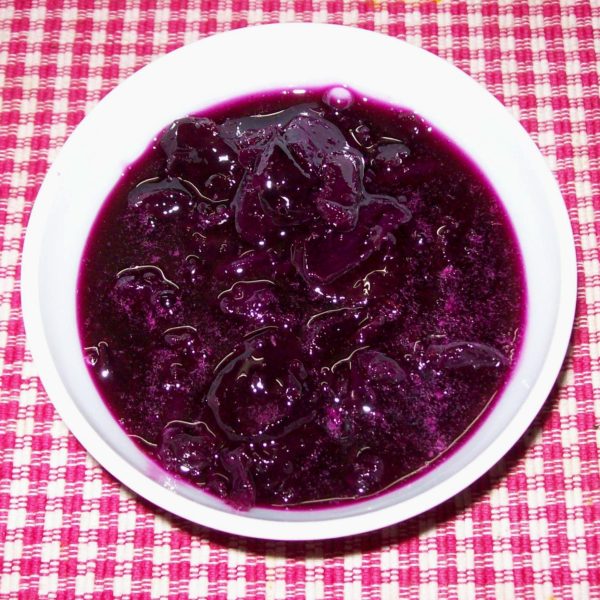Jamun is indigenous to the Indian subcontinent. The fruit is popular for its deep purple hue and is commonly consumed during monsoon ( A monsoon is a seasonal change in the direction of the prevailing, or strongest, winds of a region). Jamun has a sweet or slightly acidic flavour, and is mainly eaten raw. Although it may also be made into sauces or jams, further down in the article you will see how you can make your own jamun jam right at home!
Medical Properties
Not only does it purify blood but it improves digestion. It contains vitamin C, sodium, potassium, dietary fibre, iron zinc and calcium among other nutrients. The seed of jamun can be powdered and consumed by people with diabetes.
Read more about the benefits of consuming Jamun in this article: http://https://www.thingsguyana.com/jamun-some-health-benefits-you-didnt-know/
Stories Where Jamun Was Mentioned
Jamun has been used as imageries in culture and stories. “Jamun ka ped” is a satirical short story by Hindi writer Krishna Chander. Chander uses his comedic approach to access the rigid and bureaucratic regulations that prevail in the administrative system of the country. The story revolves around a man who had been crushed by a jamun tree after a heavy storm. The said man ends up losing his life as the people in authority push his case file around from one desk to another.
In the story of the Monkey and the Crocodile, the Jamun tree, on which the monkey lived, plays a central role in creating a friendship between the two. Towards the end of the story, the crocodile and his wife try to eat the monkey. The monkey is able to escape this fate through his sheer ingenious. He tricks the crocodile and seeks refuge in the tree.
Read the story of the Monkey and the Crocodile here: http://https://www.tell-a-tale.com/panchatantra-the-monkey-and-the-crocodile/#:~:text=Once%20there%20was%20a%20monkey,shade%20of%20the%20jamun%20tree.
Origins and Myth of Jamun
This fruit originates in India, in the sense that it holds a noteworthy place in Indian mythology. It is believed that Lord Rama resided on a jamun tree for years after his return to Ayodhya from exile. Even the Lord Megha, the God of the Clouds is said to have descended on Earth in the form of a jamun. This is perhaps the reason why the colour of the fruits is dark like the monsoon clouds. It is also one of the favourite fruits of Lord Ganesha.
In Hindu, Buddhist and Jain cosmology, the jamun tree is located in the centre of the Island Continent known as Jambudwipa.
It is most likely due to this mythology that the fruit is dubbed as “The Fruit of The Gods”.
How to make Jamun Jam
In just three simple steps you can enjoy your very own, home-made jamun jam.
Ingredients
- 1 cup of jamun
- 1 1/2 cups of water
- Cinnamon powder
- Liquid glucose
Preparation
Step 1
Cook sugar with 1 cup water till you get a syrup of two-string consistency.
Step 2
Add liquid glucose and mix. Add black jamun pulp and mix. Add cinnamon powder and mix.
Step 3
Cook till the mixture thickens. Turn off the heat. Cool and transfer into a sterilized glass jar. Serve.

Photo of Jamun Jam. Photo Source: https://commons.wikimedia.org/wiki/File:Jambhul_Jam.jpg
Here is an instructional video for more guidance: http://https://www.youtube.com/watch?v=UDEMaEEGNHw
References:
- Jamun Origins: https://scroll.in/article/809099/jamun-the-humble-fruit-that-holds-a-special-place-in-in
- Stories with Jamun Tree: https://thewire.in/culture/krishan-chander-jamun-ka-ped-english
- How to make Jamun Jam: https://www.sanjeevkapoor.com/recipe/Jamun-Jam-Turban-Tadka-FoodFood.html
- Medical properties of Jamun: https://www.healthifyme.com/blog/jamun-fruit-benefits/







